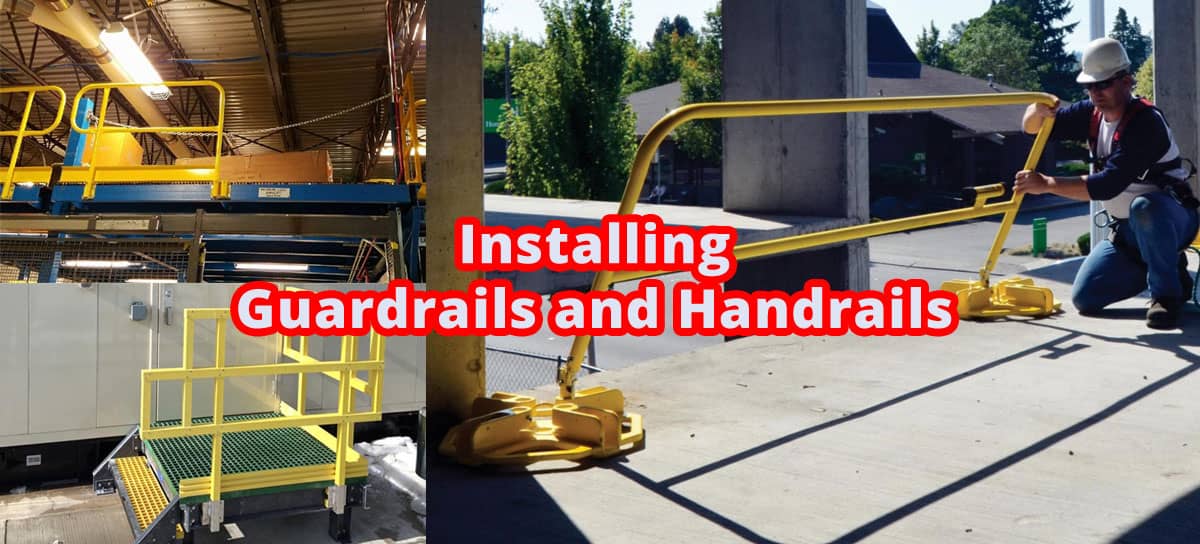Guidelines for Installing Guardrails and Handrails

Having a workplace where there is a potential risk occurrence increases the likelihood of accidents occurring at any time. Industrial and construction workplaces are among the most high-risk work environments.
Construction and industrial workplaces experience a relatively high percentage of work accidents. Falls are the leading cause of injuries in these jobs. Certain steps and methods can mitigate the risks of hazardous workplaces. Because of this, it's crucial to understand how important their role is at work. Employers and workers alike should understand the significance of these safety features in ensuring worker safety in high-risk environments.
Handrail
Despite their safety features, handrails do not serve as lifesaving devices. An employee or visitor can use a handrail as a supporting handhold on stairs, ramps, slopes, or other surfaces when they may be disabled, have trouble walking, or otherwise require assistance. Handrails are usually mounted on walls or partitions with brackets on their lower sides.
Guardrail
In addition to protecting from falls from elevated surfaces, guard rails alert employees to dangers and reduce the chance of unauthorized access to restricted areas.
A guardrail is composed of top rails, intermediate rails, and posts assembled to prevent employee falls, as well as toe boards to keep equipment, materials, and employees' feet from slipping off the edge. In contrast to handrails, guardrails protect metal steps, landings, platforms, openings, and roof spaces from injury.
Load Requirements
The structural load capacity of guardrails and handrails must ensure the safety of employees and visitors. Strong and stable guardrails and handrails are essential in industrial settings due to wear and tear.
Handrails and guardrails at the top of a staircase must withstand a linear load of 50 pounds per linear foot. It must also be capable of holding a 200-pound concentrated load applied below the top rail within two inches of its edge. Guardrails and Handrails must withstand a concentrated 50-pound load.
Length Requirements
Fall protection systems must install when employees are working on surfaces that are four feet or more off the ground. Safety nets, handrails, and other protective systems help prevent falls.
An appropriate guardrail system should measure 107 cm tall, with an estimate of 8 cm above walking surfaces. The surface of guardrails must be smooth but provide enough grips so that people can hold onto them without feeling slippery.
Advantage of Installing Handrail & Guardrail
Guardrails and handrails provide a lot of benefits at the workplace. Despite the differences in their purposes, both aim to prevent accidents.
- Fall accidents are mostly caused by falls from rooftops, where guardrails are commonly installed. If workers need to access the area, the barrier prevents unauthorized access.
- For temporary restriction and protection, non-penetrating guardrail systems are the best choice. Guardrails that do not penetrate the roof adhere to OSHA standards and keep the roof intact.
- A handrail system provides support when gaining access to high places. Workers will have direct access to anything stable to maintain their weight balance.
- Guardrails also clarify and prohibit further access to high-risk or dangerous zones in a workplace, such as areas where large machinery operates.
Wrapping it Up
Hazardous environments are prevalent in construction and industrial settings. Construction workers can easily be injured in these environments. Employers must follow construction safety guidelines to ensure workplace safety. Handrails and guardrails are important as they prevent accidents and provide protection.
Although it may seem overwhelming to keep track of all the regulations regarding guardrails and handrails at your facility, it is crucial when it comes to protecting people from falls and ensuring a culture of safety.
